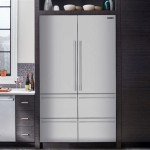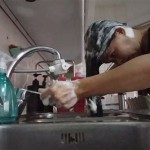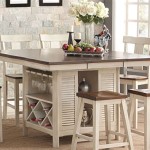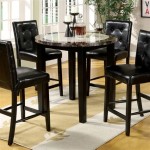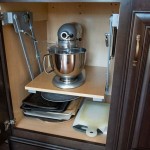Best Finishes for Kitchen Paint: A Comprehensive Guide
Selecting the appropriate paint finish for a kitchen is a crucial decision that impacts both the aesthetic appeal and the long-term durability of the painted surfaces. The kitchen environment presents unique challenges, including exposure to moisture, grease, food splatters, and frequent cleaning. Therefore, the chosen finish must be capable of withstanding these conditions while maintaining its visual integrity. Different paint finishes offer varying degrees of sheen, durability, and ease of cleaning. This article will delve into the characteristics of various paint finishes, analyzing their suitability for different areas within the kitchen and providing guidance to inform the selection process.
Understanding the properties of different paint finishes is paramount to achieving optimal results in a kitchen painting project. The finish refers to the degree of light reflection from a painted surface, often described as sheen. Higher sheen finishes reflect more light, making them appear glossier, while lower sheen finishes absorb more light, resulting in a flatter appearance. This light reflectance directly correlates to the durability and cleanability of the paint. A higher sheen typically signifies a tighter molecular structure, making the paint more resistant to moisture penetration and easier to wipe clean. Conversely, lower sheen finishes, while offering a more subtle aesthetic, can be more porous and prone to staining.
The specific areas of the kitchen being painted also influence the appropriate finish selection. Walls, cabinets, trim, and ceilings each experience different levels of wear and tear, necessitating tailored approaches. For example, areas prone to significant contact, such as cabinet doors and trim, require a more durable finish than ceilings, which are less likely to be touched or soiled. Careful consideration of these factors is essential to achieving a balance between aesthetics and functionality.
Durability and Cleanability: Key Considerations
The kitchen environment presents unique demands on paint finishes, primarily due to high levels of moisture, grease, and general usage. Durability, referring to the paint's resistance to scratching, chipping, and fading, is crucial for maintaining the long-term appearance of the painted surfaces. Cleanability, the ease with which spills and stains can be removed without damaging the finish, is equally important. These two factors are often interconnected, as a more durable finish tends to be more easily cleaned.
Higher sheen finishes, such as gloss and semi-gloss, offer superior durability and cleanability. Their smooth, tightly packed surface prevents dirt and grime from penetrating the paint, making them easy to wipe down with a damp cloth or mild cleaning solution. This makes them ideal for areas prone to splattering, such as backsplashes and areas around the stove.
Lower sheen finishes, such as matte and eggshell, typically offer less durability and cleanability. Their more porous surface allows dirt and stains to penetrate, making them more difficult to clean without leaving marks or damaging the finish. While offering a more subtle aesthetic, these finishes may require more frequent cleaning and may be more susceptible to permanent staining in high-traffic areas.
Modern paint formulations have, however, improved the durability and cleanability of lower sheen finishes. Some modern matte and eggshell paints are specifically designed for high-traffic areas and offer enhanced stain resistance and washability compared to traditional formulations. Nevertheless, it is essential to carefully evaluate the specific product specifications and intended use before making a decision.
Exploring Different Paint Finishes for Kitchens
A range of paint finishes is available, each with its own unique characteristics and suitability for different kitchen applications. Understanding the nuances of each finish is critical for making informed decisions that meet both aesthetic and functional requirements.
Gloss Finish: Gloss paint offers the highest sheen level, reflecting a significant amount of light. It is incredibly durable and easy to clean, making it highly resistant to stains and moisture. However, its high reflectivity can highlight imperfections in the surface, requiring meticulous surface preparation. Gloss finish is often used for trim and cabinets where durability and cleanability are paramount.
Semi-Gloss Finish: A step down from gloss, semi-gloss offers a slightly less reflective surface while retaining excellent durability and cleanability. It is a versatile option suitable for trim, cabinets, and walls, particularly in high-traffic areas. Semi-gloss provides a good balance between aesthetic appeal and practical performance.
Satin Finish: Satin paint offers a smooth, velvety appearance with a moderate sheen. It is more durable and easier to clean than lower sheen options, making it a suitable choice for walls in kitchens. Satin finish is less reflective than semi-gloss, offering a more subtle aesthetic while still providing adequate protection against moisture and stains.
Eggshell Finish: Eggshell paint has a low sheen, resembling the subtle texture of an eggshell. It offers a softer, more muted appearance than satin, making it a popular choice for walls. While less durable than higher sheen options, modern eggshell formulations often incorporate enhanced stain resistance and washability, making them suitable for kitchens with careful selection.
Matte Finish: Matte paint has the lowest sheen level, providing a flat, non-reflective surface. It excels at concealing imperfections but is the least durable and most difficult to clean. Traditional matte paints are generally not recommended for kitchens due to their susceptibility to staining. However, some specialty matte paints are specifically formulated for high-traffic areas and offer improved durability and cleanability, though they may still require more frequent cleaning than higher sheen options.
Specific Applications Within the Kitchen
The optimal paint finish selection is also dependent on the specific area within the kitchen. Different areas experience different levels of wear and tear, necessitating tailored approaches to ensure both aesthetic appeal and long-term performance.
Walls: For kitchen walls, satin or eggshell finishes are commonly recommended. These finishes offer a good balance between durability, cleanability, and aesthetic appeal. Satin provides slightly higher sheen and durability, while eggshell offers a softer, more muted appearance. The choice between the two depends on personal preference and the desired aesthetic.
Cabinets: Kitchen cabinets require a durable and cleanable finish due to frequent touching and exposure to grease and spills. Semi-gloss or gloss finishes are generally preferred for cabinets, offering excellent resistance to moisture and stains. The high sheen also makes them easy to wipe clean. However, meticulous surface preparation is essential to minimize the appearance of imperfections.
Trim: Kitchen trim, including baseboards, door frames, and window casings, benefits from a durable and cleanable finish similar to cabinets. Semi-gloss or gloss finishes are commonly used for trim, providing excellent protection against wear and tear. These finishes also enhance the visual definition of the trim, adding architectural interest to the kitchen.
Ceilings: Kitchen ceilings are typically less susceptible to wear and tear than walls or cabinets. Therefore, a matte or flat finish is often used for ceilings. These finishes minimize light reflection and conceal imperfections, creating a smooth and uniform appearance. However, it is important to select a paint that is specifically formulated for ceilings to prevent moisture damage and mold growth.
Backsplashes: Backsplashes are highly prone to splattering and require a very durable and cleanable finish. While tile is a common choice, paint can be used if properly prepared and sealed. Gloss or semi-gloss paint is recommended for painted backsplashes, providing the best resistance to moisture and stains. Alternatively, a durable epoxy paint can be used for even greater protection.
Ultimately, selecting the best paint finish for a kitchen requires careful consideration of various factors, including durability, cleanability, aesthetic appeal, and the specific area being painted. Understanding the characteristics of each finish and tailoring the selection to the unique demands of the kitchen environment is crucial for achieving optimal results and ensuring the longevity of the painted surfaces. By following these guidelines, homeowners can create a kitchen that is both beautiful and functional for years to come.
:max_bytes(150000):strip_icc()/best-paint-sheen-for-kitchen-1822123-hero-4a38a2049b404591b4612da86dab955a.jpg?strip=all)
Best Paint Finish For Kitchen Walls And Cabinets

Best Paint Finish For Kitchen Walls Eco Inc

Best Kitchen Cabinet Paint Finish For Professional Results Pennies A Fortune

The Best Paint Finish For Kitchens Nix Sensor Ltd

The Ultimate Guide To Choosing Best Paint For Your Kitchen Walls Ng Bespoke

Best Kitchen Cabinet Paint Finish For Professional Results Pennies A Fortune

Best Paint Finish For Kitchen Walls Eco Inc
8 Best Cabinet Finishes Paints Stains Glazes And More Vevano

Which Is The Best Laminate Kitchen Or Acrylic

Best Paint For Your Next Cabinet Project The Home

